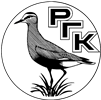Who are waders?
This post is also available in: Русский (Russian)
Waders (or shorebirds) is a group of allied birds forming together with gulls and auks the Order Charadriiformes. Previously waders were distinguished as a separate order or sub-order Limicolae. However, currently an increasing amount of evidence is accumulating in favour of an opinion that waders are not monophyletic and consist of two lineages of birds, in one of which plovers, avocets and oystercatchers are related to gulls and terns, while another combining snipes, sandpipers, shanks, their allies, jacanas and painted snipes represents an independent evolutionary branch.
A majority of waders are waterbirds, although some of them inhabit deserts (Stone-curlews, cursors and some plovers) or forests (woodcocks). Dependence on waterbodies makes waders similar to Ciconiiformes (herons, ibises and storks), but unlike the latter waders are much smaller, ranging in size from sparrow to pigeon. Characteristic long legs help waders to move in shallow waters or soft mud, while long sensitive bill allows searching for food by touch in a soft soil.
Most waders are characterized by dispersed distribution on breeding, although several species nest in colonies (coursers, stilts, avocets) or semi-colonies (Northern Lapwing and some others). Waders demonstrate elaborated and diverse territorial and mating behaviour. Males of some species form localized ground leks (Ruff, Great Snipe). A diversity of mating systems in waders is unique for birds and includes monogamy (most species), polyginy (a male mates with several females), polyandry (a female leaves clutches to several males), promiscuity and even exotic double-nesting, when two clutches laid by a female are incubated by this female and male respectively. Wader chicks have open eyes at hatching and are ready to search for food by their own, but parents care for brood by warming chicks up, warning them about a potential danger and leading chicks to favourable feeding localities.
Most waders belong to long-distant migrants (with a record non-stop flight of ca. 11,000 km from Alaska to New Zealand by Bar-tailed Godwits), which allowed them to inhabit all continents and big islands except for Antarctic. During migration many species of waders concentrate in high numbers in relatively small areas of seacoasts, where feeding conditions are especially favorable for replenishing energetic reserves. This feature of wader biology makes them vulnerable to human activities, which also concentrate on coasts. Many species of waders are being hunted.
In total 214 species of waders are distinguished worldwide, 94 of which have been recorded in CIS countries (ссылка на список видов). During historic time one species became extinct from the CIS territory (Eskimo Curlew), at least two species are close to extinction (Slender-billed Curlew and Sociable Lapwing), while populations of several other species have been rapidly declining (Spoon-billed Sandpiper and Black-winged Pratincole) or remain at a steady low level (Spotted Greenshank, Buff-breasted Sandpiper, Great Snipe). Many species of waders are included into official national Red Data Books or are listed in various international Red Data Lists. In contrast, several other species are expanding (e.g., Black-winged Stilt, Woodcock, Long-billed Dowitcher).


